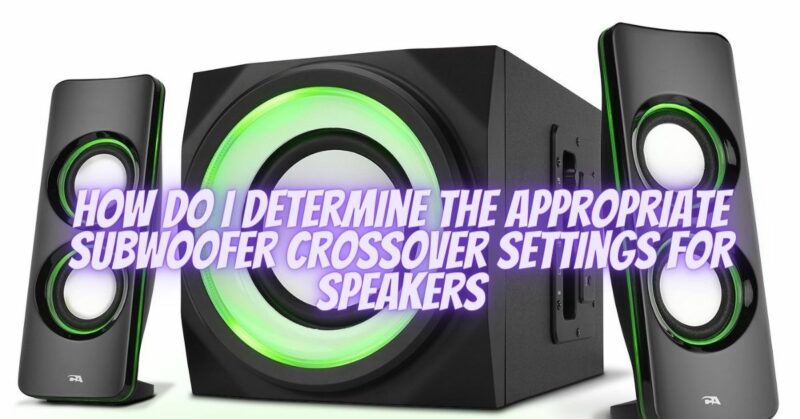Integrating a subwoofer with your main speakers is a key step in achieving a balanced and immersive audio experience. Properly configuring the subwoofer crossover settings ensures that the subwoofer seamlessly blends with the main speakers, enhancing the low-frequency performance without overpowering or interfering with the overall sound. In this article, we will guide you through the process of determining the appropriate subwoofer crossover settings for your speakers, helping you achieve optimal integration and a cohesive audio presentation.
- Understand the Basics of Crossover Frequency:
The crossover frequency determines at what point the main speakers transition to the subwoofer for low-frequency reproduction. It is typically measured in Hertz (Hz) and represents the frequency at which the output of the main speakers starts to roll off, and the subwoofer takes over. The goal is to find a crossover frequency that allows for a smooth transition between the speakers and the subwoofer, avoiding frequency gaps or overlaps.
- Identify the Frequency Response of Your Main Speakers:
Refer to the specifications or documentation of your main speakers to identify their frequency response range. Look for the lowest frequency at which the speakers can effectively reproduce sound without significant roll-off. This information will help determine the upper limit of the crossover frequency range.
- Consider Room Acoustics and Listening Preferences:
Room acoustics and personal listening preferences play a crucial role in determining the appropriate subwoofer crossover settings. Factors such as room size, shape, and furniture placement can impact bass response. Additionally, individual listening preferences may vary, with some preferring a more pronounced bass presence while others seek a more balanced sound. Consider these factors when setting the crossover frequency.
- Start with a Conservative Crossover Frequency:
As a general guideline, start with a conservative crossover frequency. A good starting point is typically around 80 Hz, which is commonly used in many home theater setups. This frequency is often referred to as the “THX crossover frequency” and provides a smooth transition between speakers and subwoofers.
- Experiment and Fine-Tune:
Once you have set the initial crossover frequency, listen to various audio content, including music, movies, and other media that you regularly enjoy. Pay attention to the bass response, ensuring that it is well-integrated with the main speakers and that there are no noticeable frequency gaps or overlaps. If you notice any issues, such as a boomy or muddy bass, adjust the crossover frequency gradually until you achieve a balanced and cohesive sound.
- Use Test Tones and Room Calibration:
Consider utilizing test tones or room calibration tools to help fine-tune the subwoofer crossover settings. These tools generate specific frequencies to test the response of your speakers and subwoofer in your listening environment. They can provide valuable insights into the performance of your audio system and assist in finding the optimal crossover frequency and other settings.
- Seek Expert Advice:
If you find it challenging to determine the ideal subwoofer crossover settings or if you desire a more advanced setup, consider consulting with audio professionals or experienced enthusiasts who can provide guidance tailored to your specific equipment and listening environment.
Conclusion:
Setting the appropriate subwoofer crossover settings for your speakers is a crucial step in achieving a balanced and immersive audio experience. By understanding the frequency response of your main speakers, considering room acoustics and personal preferences, and starting with a conservative crossover frequency, you can create a foundation for optimal integration. Fine-tuning through experimentation, utilizing test tones or room calibration tools, and seeking expert advice when needed further refine the crossover settings. With proper integration, your subwoofer will enhance the low-frequency performance of your audio system, providing depth, impact, and a heightened sense of realism without overpowering the main speakers. Enjoy the journey of finding the perfect balance between speakers and subwoofer, and immerse yourself in the captivating world of high-quality audio reproduction.


